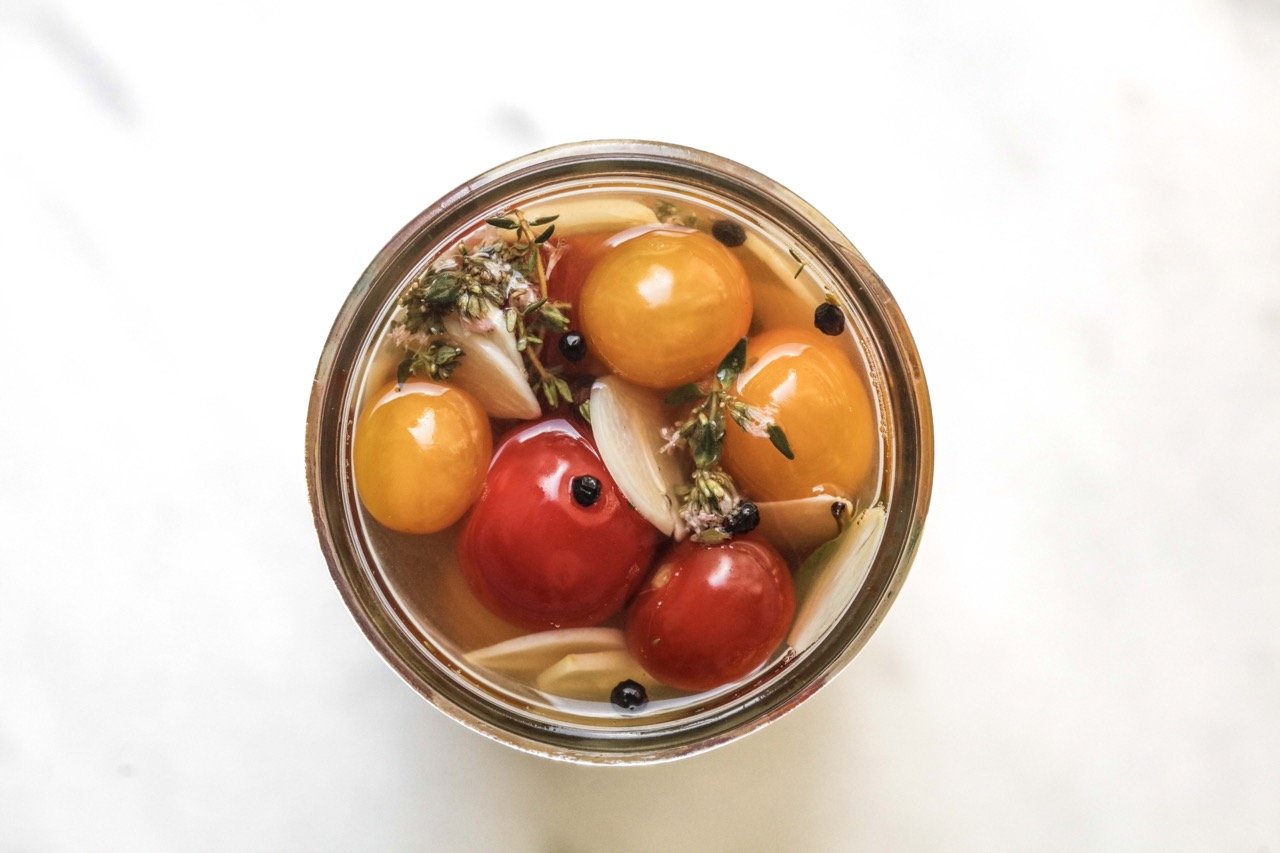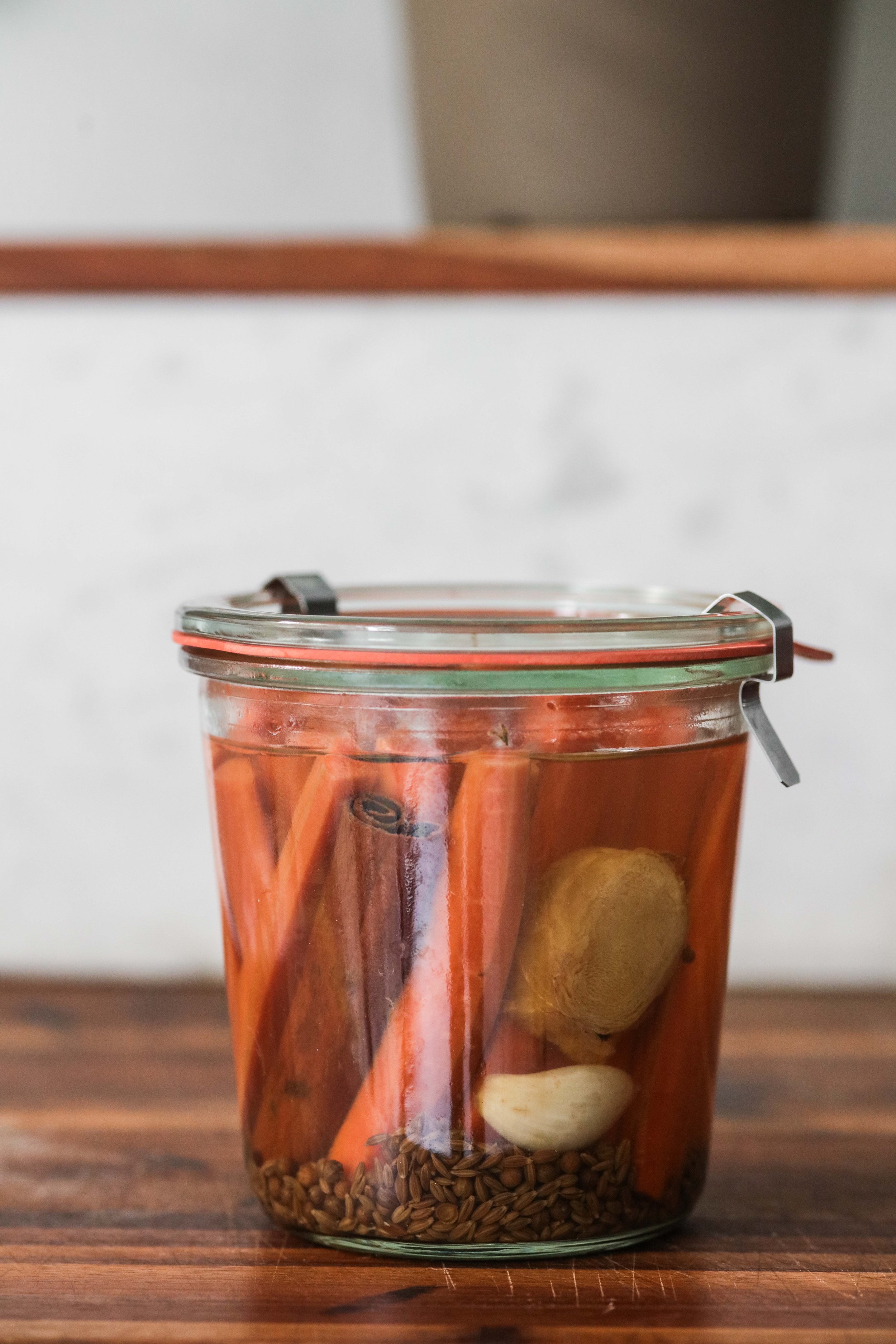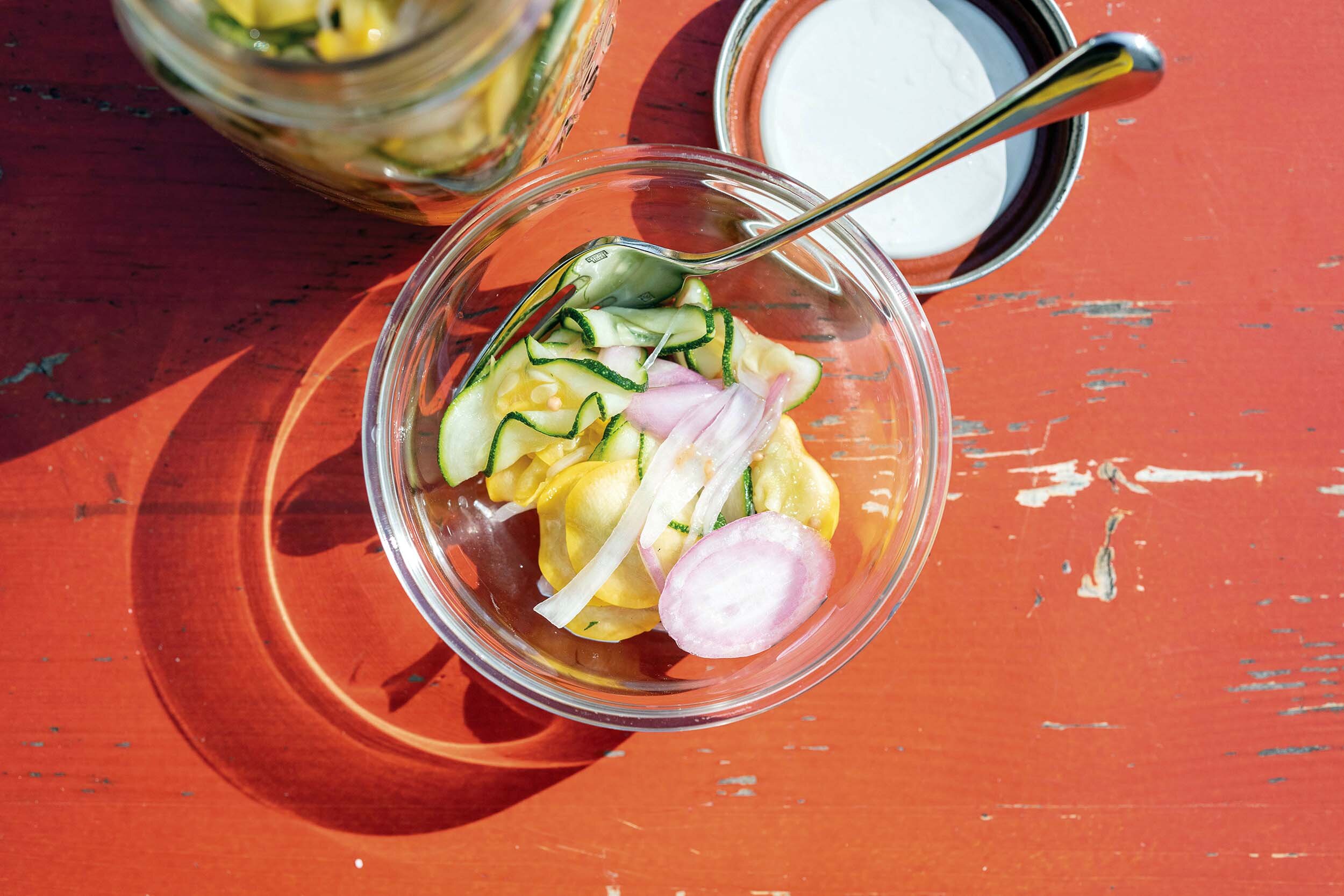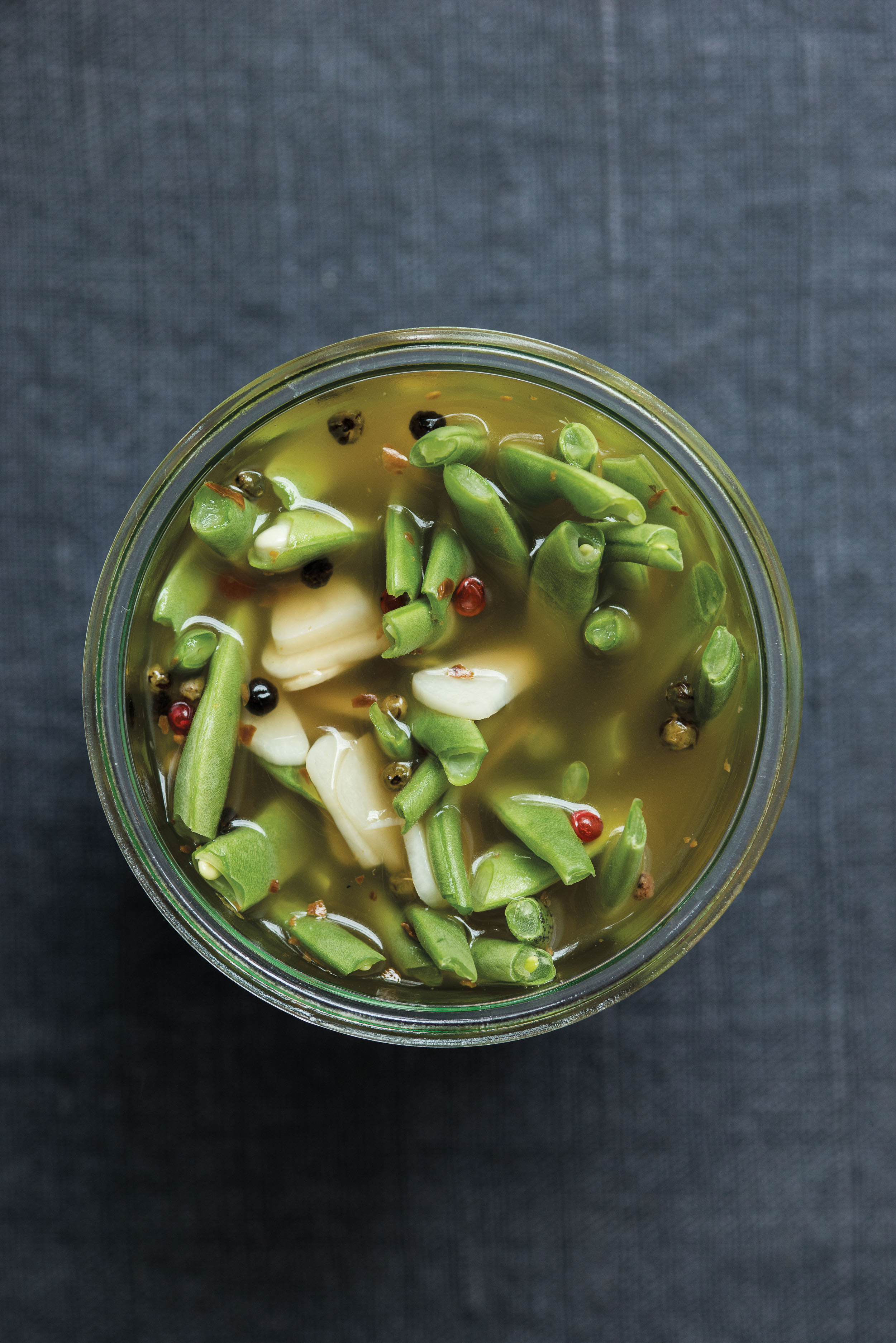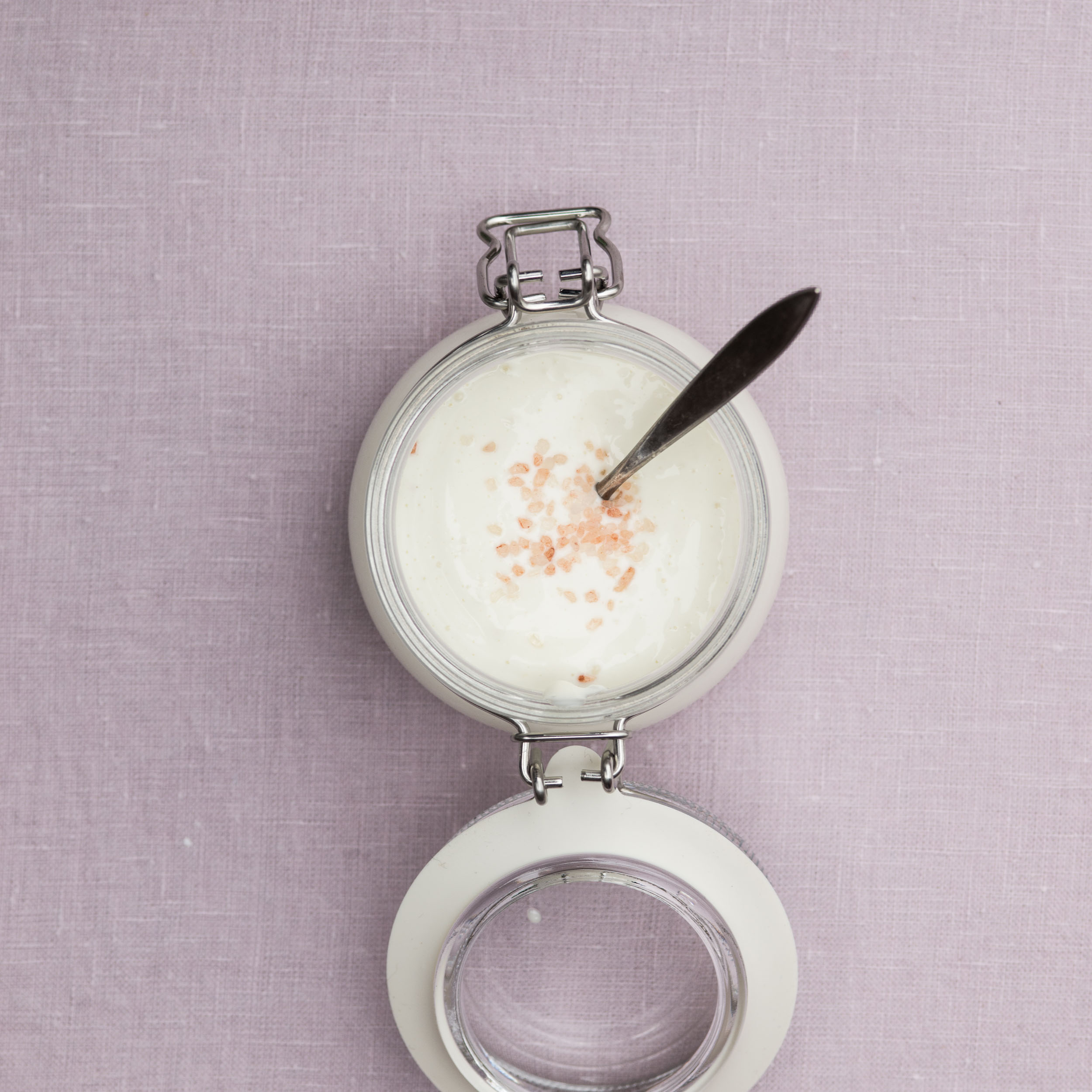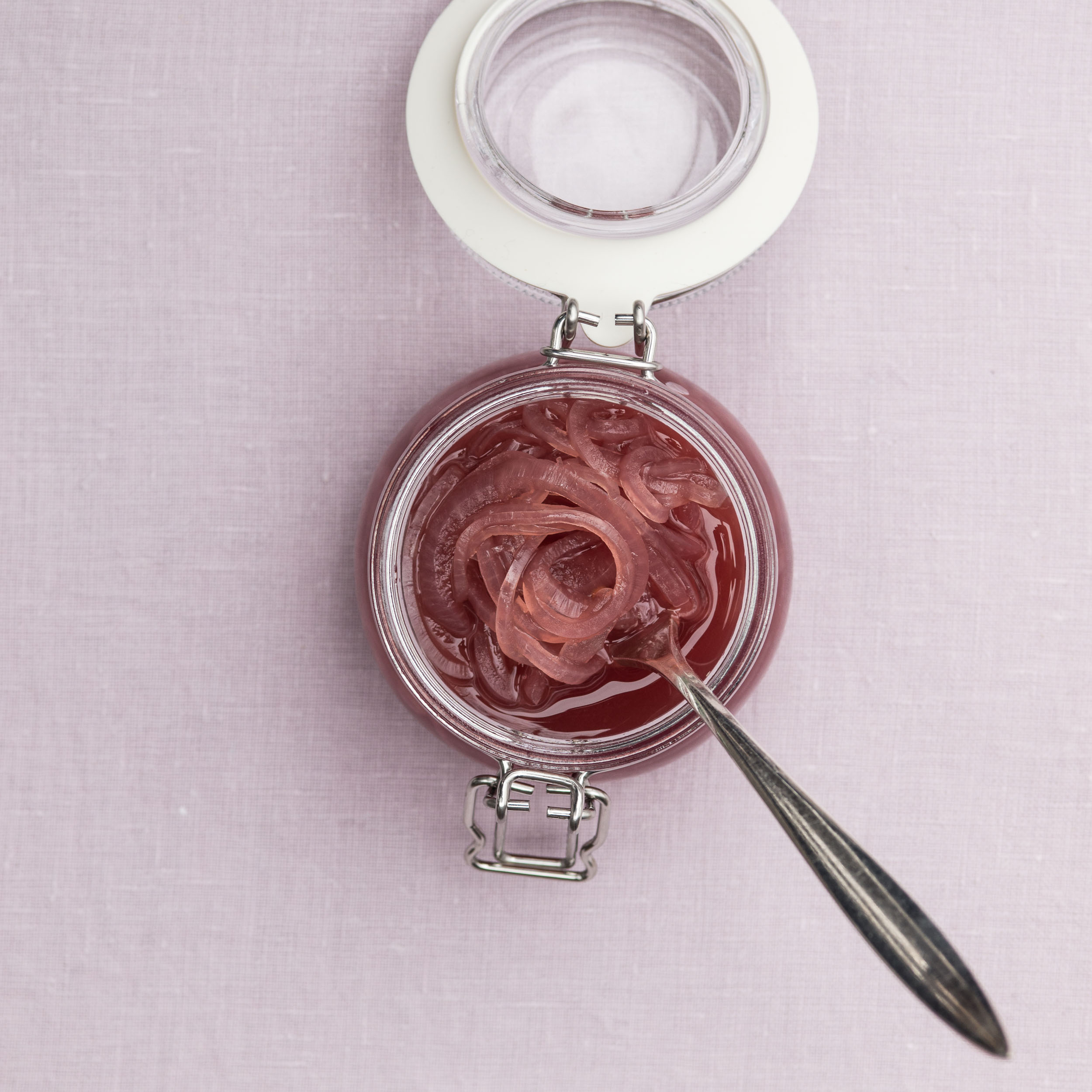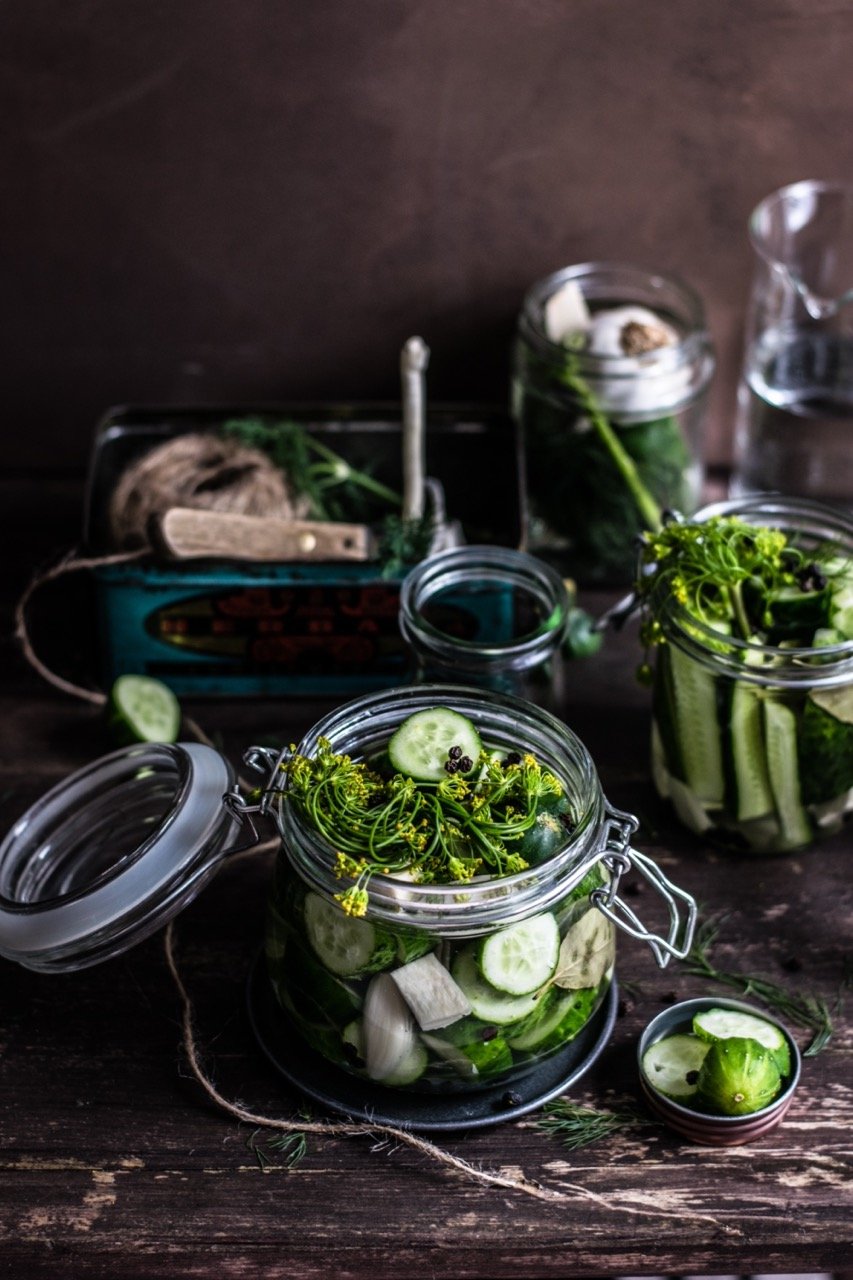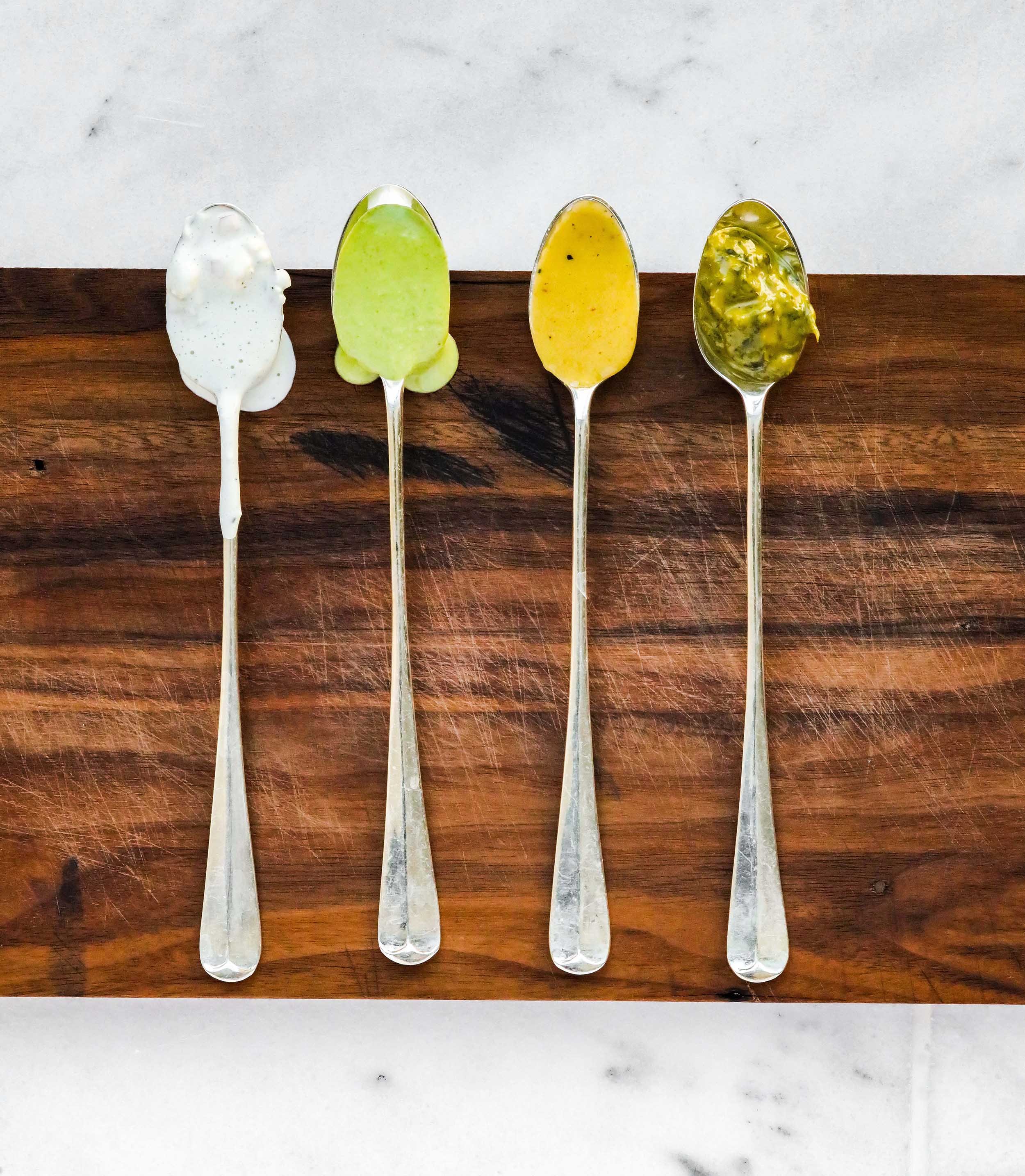You Can Pickle That!
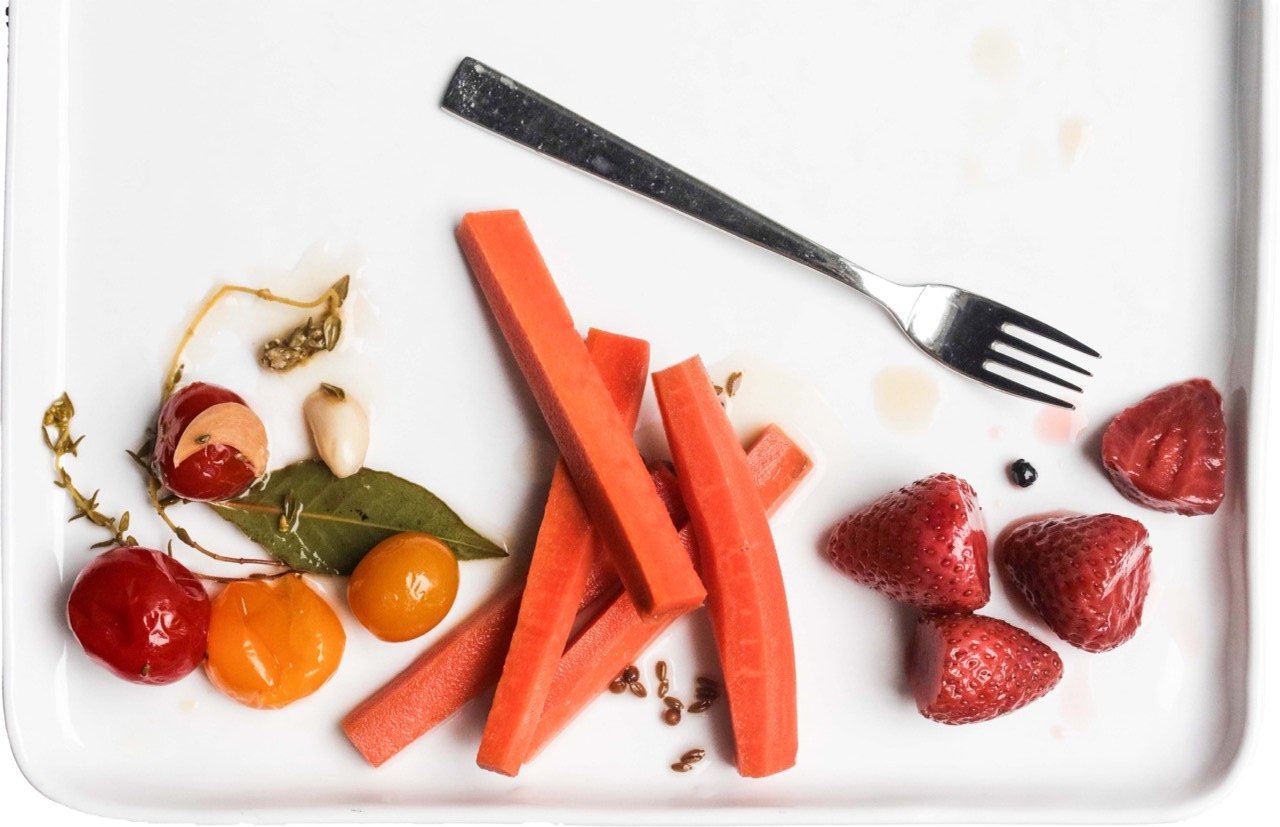
Go beyond cukes this summer and pickle all sorts of seasonal produce.
It’s maybe the funniest sketch of the very funny sketch comedy show Portlandia: Bryce Shivers and Lisa Eversman (played for ironic earnestness by Fred Armisen and Carrie Brownstein) say, “Everything should be pickled”—as they proceed to pickle literally everything, including worn Band-Aids, plastic CD jewel cases, traffic tickets, a broken shoe heel …
Now, we’re not suggesting that you pickle non-comestibles. We are suggesting, however, that you take the opportunity this summer to pickle stuff you haven’t pickled before.
Peaches, plums, and nectarines? Yep, you can pickle those. Cherry tomatoes? Aces. Peppers and carrots and corn and zucchini? You betcha.
All About That Brine
We’re talking about quick pickling, which is a super easy technique that involves pouring hot brine over fresh fruits or veggies in a pint or quart canning jar. Brine is simply a mixture of vinegar and water, but the magic really happens when you add flavorings.
Here’s a quick formula to yield 2 pints of pickled whatever:
1 pound fresh produce + 1 cup vinegar + 1 cup water + 1 tablespoon sugar + 1 tablespoon Kosher salt
So, let’s work through the formula
Produce can be just about anything that’s in season. Scallions, asparagus, Swiss chard stems, ramps, rhubarb, and strawberries in spring. Cherry tomatoes, zucchini, carrots, corn, peppers of all types, stone fruit, beets, and onions in summer. In fall, try apples, cauliflower, cabbage, turnips, or brussels sprouts. Select items that are blemish-free and slightly underripe to ripe, and wash and trim the produce before pickling.
Choose a vinegar whose flavor profile fits the produce. For milder-tasting veg or fruit, champagne, rice wine, or a lightly sweet apple cider vinegar works well; for firmer vegetables or when you want a bolder flavor, think about stronger-tasting vinegars like red wine or a pungent apple cider vinegar. You can do a 1 : 1 vinegar-water ratio or reduce the amount of water to enhance the vinegary zing.
Sugar and salt are really a matter of preference; I prefer a tad more sugar than salt, more like 2 : 1 or even 3 : 1 (so, 3 tablespoons sugar to 1 tablespoon salt). You can take a quick taste of the warm brine and add sugar or salt and then reheat to dissolve it.
Add Lots of Flavor
Here’s where you can really get creative. Think about the flavor profile you want the pickles to have: fresh and herby, spicy, sweet and tangy, garlicky.
If you’re using spices in seed form (mustard, cumin, coriander, fennel, peppercorns), toast them lightly in a dry saucepan to bring out their flavors before adding the water and vinegar and making the brine. Whole cloves, star anise, and cinnamon sticks are great for pickling fruit. Garlic cloves, onion or scallion, and slices of fresh ginger are great additions. Go for fresh herbs like tarragon, dill, or thyme (basil tends to go limp and sad in a pickle jar). If you’re serving the pickles directly from the jar, you can always replace the original herb sprigs with fresh ones for appearance.
Place your vegetables or fruits and fresh flavorings (herbs, garlic, etc.) in the jars, and then pour in the hot brine to cover, leaving about a half-inch of headspace. Cover the jars, let cool to room temperature, and then refrigerate for a day or two to develop the flavors before eating.
Keep It Clean
A note of clarification: Quick pickles are meant to be consumed in a couple of weeks, up to a month, and they’re stored in the refrigerator. They’re not water-bath processed for long preservation. Still, it’s smart to start with sterilized jars and lids: Place the jars and lids in the sink and liberally pour boiling water over them. Let them cool before filling. n
Bryn’s long career in publishing took a left turn sometime around 2010, when she discovered the joy of food writing. Since then, she’s found professional nirvana as the editor of Edible Ohio Valley, author of The Findlay Market Cookbook, and occasional instructor at The Cooking School at Jungle Jim’s. Find her seasonal recipes at writes4food.com.

